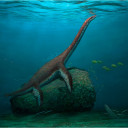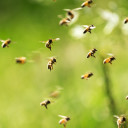Bees follow linear landmarks to find their way home, just like the first pilots
By Mischa Dijkstra, Frontiers science writer Scientists have shown that honeybees retain a memory of the dominant linear landscape elements in their home area like channels, roads, and boundaries. When transported to an unfamiliar area, they seek out local elements of this kind, compare their layout to the memory, and fly along them to seek their way home. This navigation strategy is similar to the one followed by the first human pilots. In the earliest days of human flight, before the invention of the first radio beacons and ground-based electronic systems, and modern GPS, pilots commonly navigated by following roads and railways – striking linear landscape elements at ground level that guide towards a destination of interest. Enter the honeybee. A century of research has shown that honeybees are navigators par excellence. They can navigate by their sense of smell, the sun, the sky’s pattern of polarized light, vertical landmarks that stand out from the panorama, and possibly the Earth’s magnetic field. They are also clever learners, able to recognize associations between disparate memories in order to generalize rules. Now, scientists have shown that honeybees tend to search for their way home by orienting themselves in relation to the dominant […]














